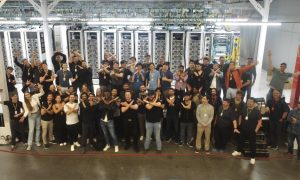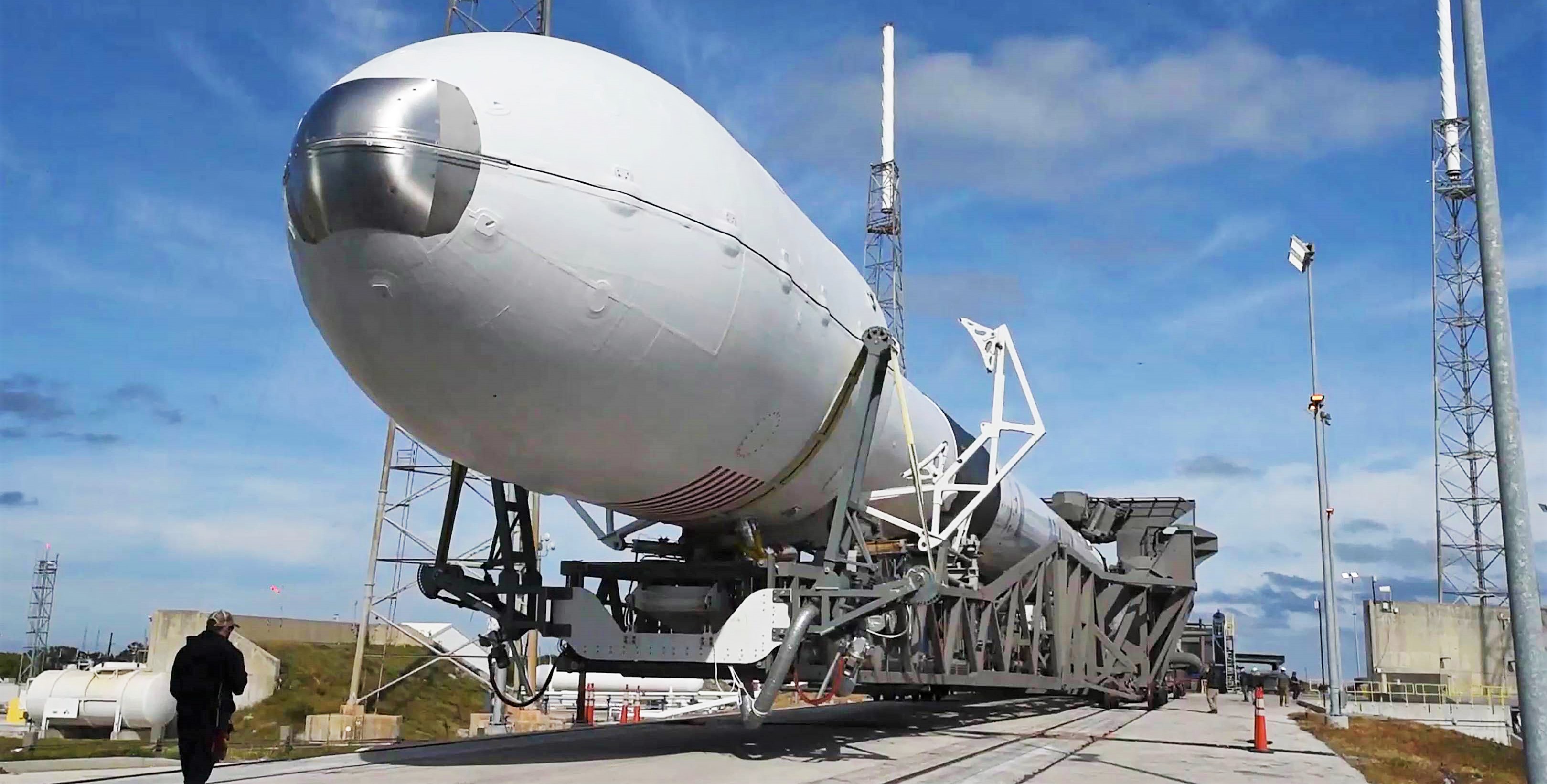

News
SpaceX on track for US Air Force Falcon 9 mission later this year
Reading between the lines, the US Air Force has effectively confirmed that GPS III Space Vehicle 03 (SV03) – the third GPS III satellite built by Lockheed Martin – is ready for launch aboard a SpaceX Falcon 9 rocket, scheduled no earlier than December 2019.
In December 2018, SpaceX successfully launched the first GPS III spacecraft aboard an expendable Falcon 9 Block 5 rocket, kicking off a launch campaign – shared between SpaceX and ULA – that will likely last until 2023 or 2024. Thus far, ULA has won a single GPS III launch contract, scheduled for July 2019, while SpaceX has won three (with options for two more). Thanks to competition forcefully reintroduced by a 2014 SpaceX lawsuit, the USAF – and thus US taxpayers – are likely saving a minimum of $50M per GPS III launch.
In late 2018, SpaceX’s closer followers were surprised to discover that brand new Falcon 9 Block 5 booster B1054 – the first to be officially certified for a critical operational military launch – was to be expended, making no attempt to land. This was confusing for several reasons.
“If Falcon 9 [was to be] expended solely because of mission performance requirements, despite the oddly low payload mass (~3800 kg) and comparatively low-energy orbit (~20,000 km), the only possible explanation for no attempted recovery would be the need for Falcon 9’s upper stage to circularize the orbit after a long coast. However, the mission parameters the USAF shopped around for would have placed the GPS III satellite into an elliptical orbit of 1000 km by 20,181 km, an orbit that would almost without a doubt leave Falcon 9 with enough propellant for a drone ship recovery.”
— Teslarati.com, December 2018
As it turns out, there was, in fact, nothing unique about the elliptical, medium-energy orbit GPS III SV01 was placed in. According to external analysis of the Falcon 9 upper stage’s final deorbit activities, SpaceX had “plenty of extra performance available”, objectively indicating that that excess performance was intentionally removed from booster B1054 at the cost of its ability to land. The (unconfirmed) reason for this is quite simple: the US Air Force chose extreme – perhaps even excessive – caution to account for the minute chance that myriad failures might happen mid-launch.
To sacrifice, or not to sacrifice
According to a USAF statement made in mid-May, GPS III Space Vehicle 03 (SV03) has been officially classed as “available for launch”, jargon that means the satellite is fully assembled and has successfully completed extensive pre-launch testing. For SpaceX’s inaugural GPS III launch (SV01), a pathfinder that carried unique wait and likely took additional processing time, SpaceX and the USAF took roughly five months to go from shipping the satellite to Florida to going vertical atop Falcon 9. More likely than not, GPS III SV03 has already begun to be prepared for transport from California to Florida, meaning that SV03 is roughly 1-2 months ahead of the schedule SV01 followed ahead of its Falcon 9 launch debut.
So: the GPS III satellite is ready for launch. The next critical milestones will be the satellite’s transport to Florida and SpaceX’s completion of the mission’s USAF-grade Falcon 9. B1054’s technically unnecessary sacrifice thus raises a question for SpaceX’s next GPS III launch, currently scheduled no earlier than December 2018: will another fresh Falcon 9 Block 5 booster be sacrificed to the gods of Obsessively Cautious Margins?

The optimist in me wants to say, “Of course!” With GPS III SV01, SpaceX perfectly demonstrated Falcon 9’s performance and permitted the USAF the luxury of expending a brand new Falcon 9 booster to satisfy the customer’s desire for extremely cautious margins. The Falcon 9 upper stage’s luxuriously expensive (in terms of delta V) deorbit burns – performed after a several-hour cost in orbit – served as another definitive demonstration of the rocket’s intentionally underutilized performance. Having demonstrated a flawless launch with margins on margins, it seems reasonable that the US Air Force would permit SpaceX the freedom to recover Falcon 9 B105x after launching GPS III SV03.
On the other hand, the USAF and Department of Defense are not exactly known for their rational, evidence-based strategies of decision-making and procurement. As such, it’s safe to say that – without official info from SpaceX or the USAF – the answer to the question of whether SpaceX will need to continue expending valuable boosters for GPS launches is entirely up in the air – call it a 50-50 split.

In the meantime, GPS III SV03’s Falcon 9 booster is likely several months away from shipping off to SpaceX’s McGregor, Texas facilities for static fire testing. Up next for SpaceX is a critical Falcon Heavy launch that could secure the rocket’s certification for US military launches, become the first USAF mission to utilize flight-proven SpaceX boosters, and pave the way for the USAF to develop a dedicated certification process for launching on commercially-developed reusable rockets.
Check out Teslarati’s Marketplace! We offer Tesla accessories, including for the Tesla Cybertruck and Tesla Model 3.
News
Tesla Robotaxi has already surpassed Waymo in this key metric
Tesla Robotaxi has already overtaken Waymo in Austin in one key metric, but there’s still more work to do.

Tesla Robotaxi has already surpassed Waymo in one extremely important key metric: size of service area.
Tesla just expanded its service area in Austin on Monday morning, pushing the boundaries of its Robotaxi fleet in an interesting fashion with new capabilities to the north. Yes, we know what it looks like:
🚨 Tesla’s new Robotaxi geofence is…
Finish the sentence 🥸 pic.twitter.com/3bjhMqsRm5
— TESLARATI (@Teslarati) July 14, 2025
The expansion doubled Tesla Robotaxi’s potential travel locations, which now include the University of Texas at Austin, a school with over 53,000 students.
The doubling of the service area by Tesla has already made its travel area larger than Waymo’s, which launched driverless rides in October 2024. It became available to the public in March 2025.
According to Grok, the AI agent on X, Tesla Robotaxi’s current service area spans 42 square miles, which is five square miles larger than Waymo’s service area of 37 square miles.
Tesla Robotaxi (red) vs. Waymo geofence in Austin.
Much can be said about the shape… but the Robotaxi area is now ~3.9 mi² (10 km²) larger than Waymo’s!! pic.twitter.com/dVfh2ODxJC
— Robin (@xdNiBoR) July 14, 2025
The service area is one of the most important metrics in determining how much progress a self-driving ride-hailing service is making. Safety is the priority of any company operating a ride-hailing network, especially ones that are making it a point to use autonomy to deploy it.
However, these companies are essentially racing for a larger piece of the city or cities they are in. Waymo has expanded to several different regions around the United States, including Arizona and Los Angeles.
Tesla is attempting to do the same in the coming months as it has already filed paperwork in both California and Arizona to deploy its Robotaxi fleet in states across the U.S.
As the platform continues to show more prowess and accuracy in its operation, Tesla will begin to expand to new areas, eventually aiming for a global rollout of its self-driving service.
News
Tesla Megapacks arrive for massive battery replacing coal plant
Tesla Megapacks have started arriving on-site to the Stanwell Battery Project, just as Queensland prepares to wind down the Stanwell coal plant.
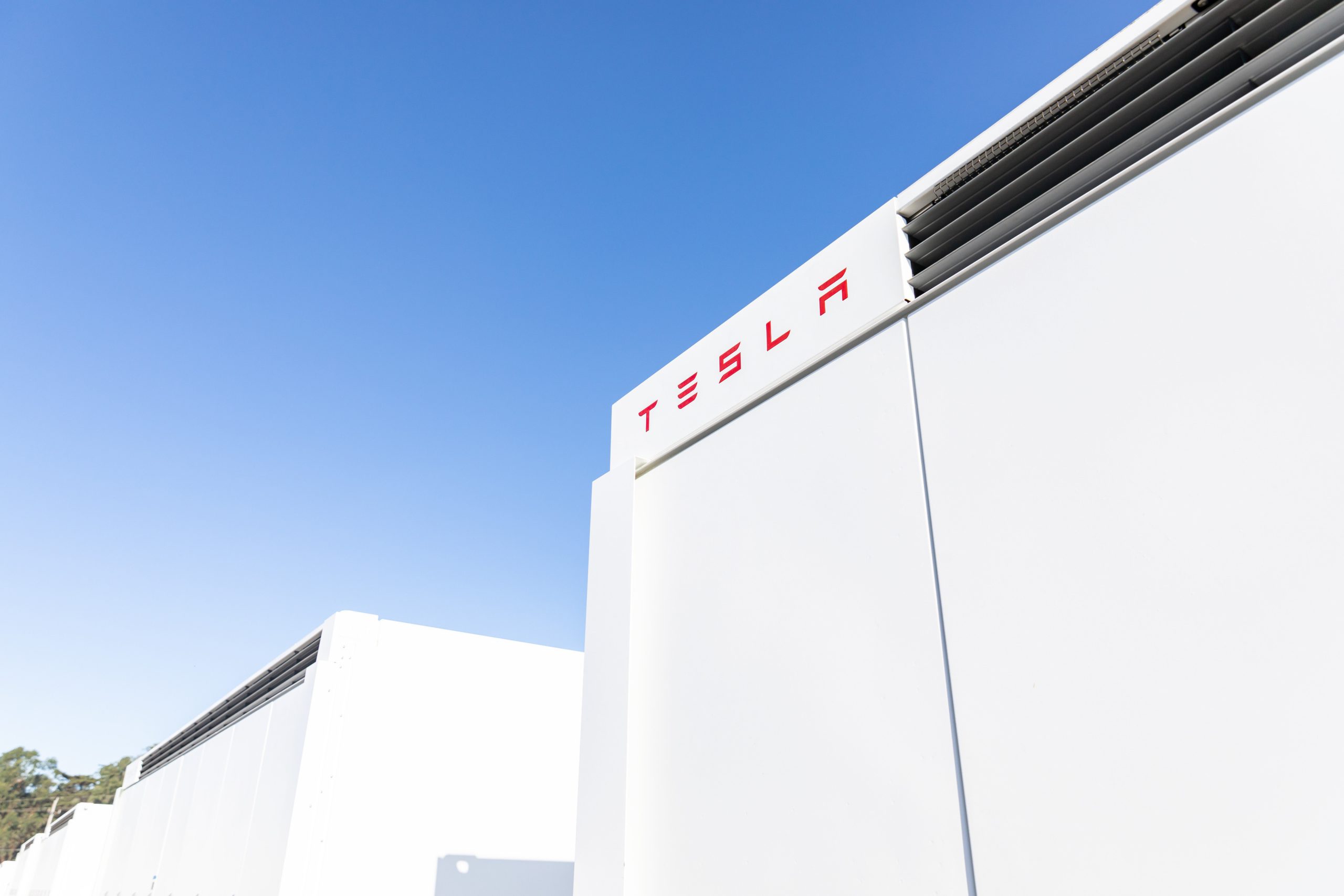
The first of over 300 Tesla Megapacks have arrived to the site of a massive battery energy storage system (BESS) being built in Australia, dubbed the Stanwell Battery Project after a coal plant it’s set to replace.
In a press release last week, the Stanwell Battery Project announced that the first Tesla Megapack 2XL units had arrived to the site, which is located outside of Rockhampton in Queensland, Australia. The project will eventually feature 324 Megapack units, set to arrive in the coming months, in order to support the 300MW/1,200MWh battery project.
“The Stanwell Battery is part of the diversification of our portfolio, to include cleaner and more flexible energy solutions,” said Angie Zahra, Stanwell Central Generation General Manager. “It is just one part of the 800 MW of battery energy storage capacity we have in our pipeline.
“Capable of discharging 300 MW of energy for up to four hours (1,200 MWh), our mega battery will be one of the largest in Queensland.”
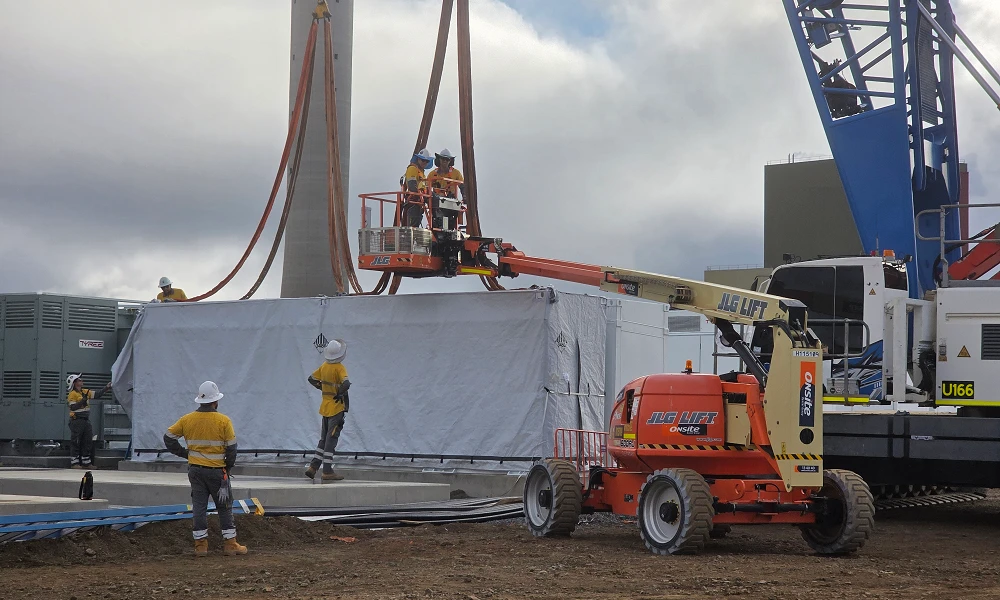
Credit: Stanwell
Did you know Tesla’s Lathrop facility churns out a Megapack every 68 minutes? That’s enough energy to power 3,600 homes for an hour per unit! ⚡️ pic.twitter.com/bG6fpHkB9O
— TESLARATI (@Teslarati) June 11, 2025
READ MORE ON TESLA MEGAPACKS: Tesla Lathrop Megafactory celebrates massive Megapack battery milestone
The state is working with government-owned company Yurika to facilitate construction, and the process is expected to create roughly 80 jobs. The project is expected to come fully online in May 2027, with initial commissioning of the Megapacks aiming for November 2025.
The Stanwell Battery is set to replace the nearby Stanwell coal generation plant, which the government is planning to wind down starting in 2026 as part of efforts to reach an 80 percent renewable energy generation ratio by 2035. Meanwhile, the government is also set to begin winding down the Tarong and Callide coal plants, while several other Megapack projects are being built or coming online. o ya
Tesla currently has two Megapack production facilities, located in Lathrop, California, in the U.S. and another that came online earlier this year in Shanghai, China. The Shanghai Megafactory shipped its first units to Australia in March, while both factories are expected to be capable of producing 10,000 Megapack units per year upon reaching volume production.
News
The Tesla Diner is basically finished—here’s what it looks like
The company first broke ground on the Diner, Drive-in, and Supercharger location in September 2023. Now, it has served one of its first internal customers.

Tesla has finally completed the construction of its highly anticipated Diner, Drive-in, and Supercharger in Los Angeles, and recent photos of the interior’s “retro-futuristic” style are making their way around the internet.
X user Brad Goldberg shared photos from the Tesla Diner site last Tuesday, depicting some of the Supercharger stalls, indoor and outdoor seating areas, multiple neon lights, and even an Optimus robot. Goldberg also noted that there had been a “flurry of activity on site” while he was snapping the photos last week, suggesting that the restaurant location could be getting close to opening.
The Tesla Diner also served one of its first internal customers in the past few days, as Elon Musk posted on X on early Monday morning that he had just finished up eating a meal at the site:
I just had dinner at the retro-futuristic Tesla diner and Supercharger.
Team did great work making it one of the coolest spots in LA!
The photos also show that the site is pretty much done, with some of them even showing vehicles charging at the charging stalls.
You can see some of the latest photos of the Tesla Diner below.
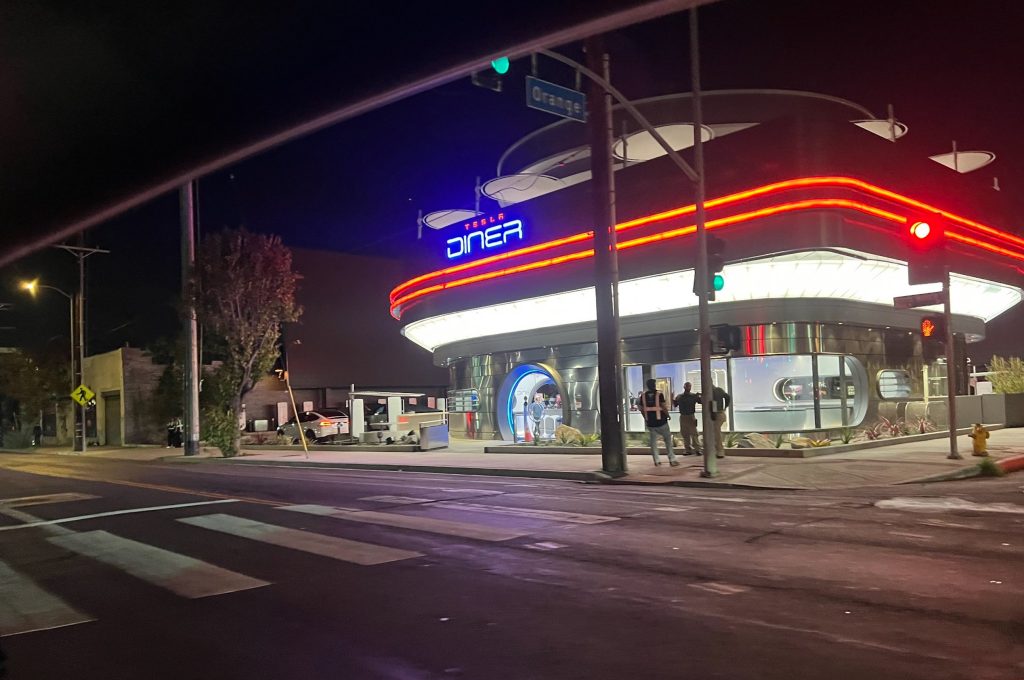
Credit: BradGoldbergMD | X
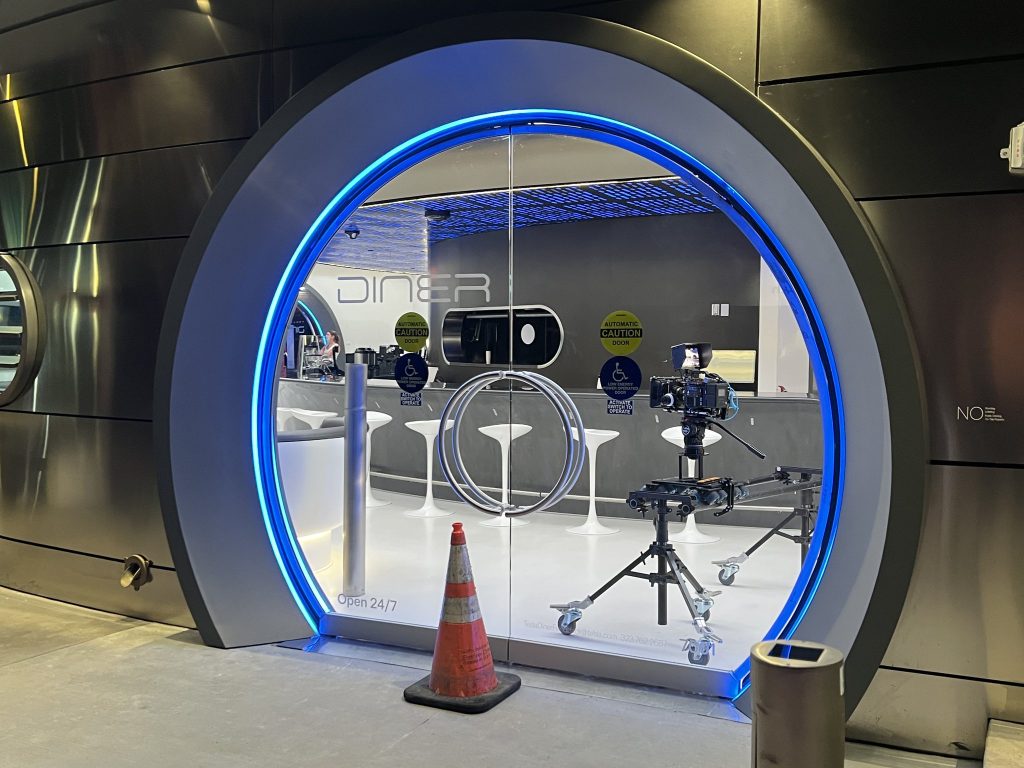
Credit: BradGoldbergMD | X
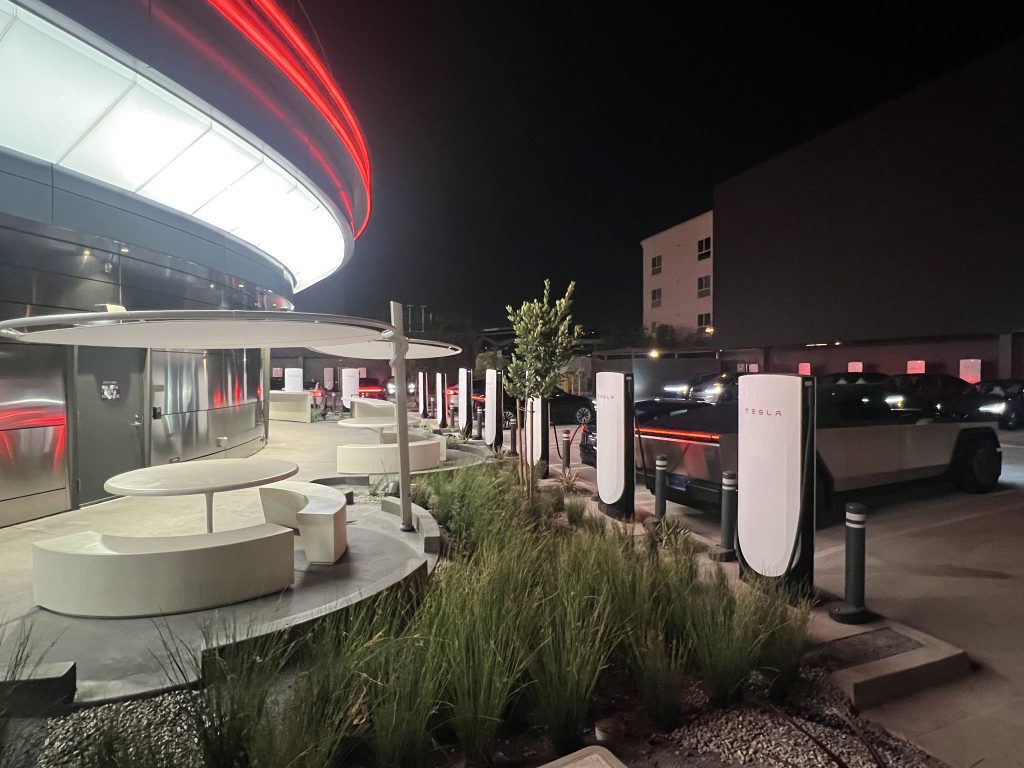
Credit: BradGoldbergMD | X
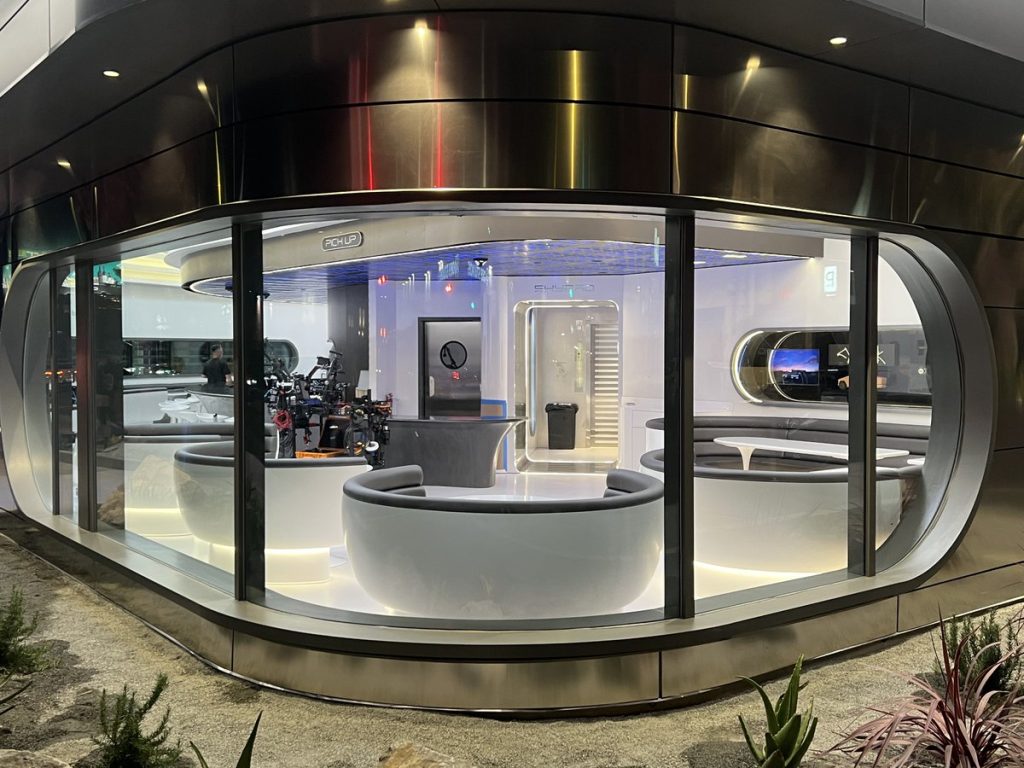
Credit: BradGoldbergMD | X
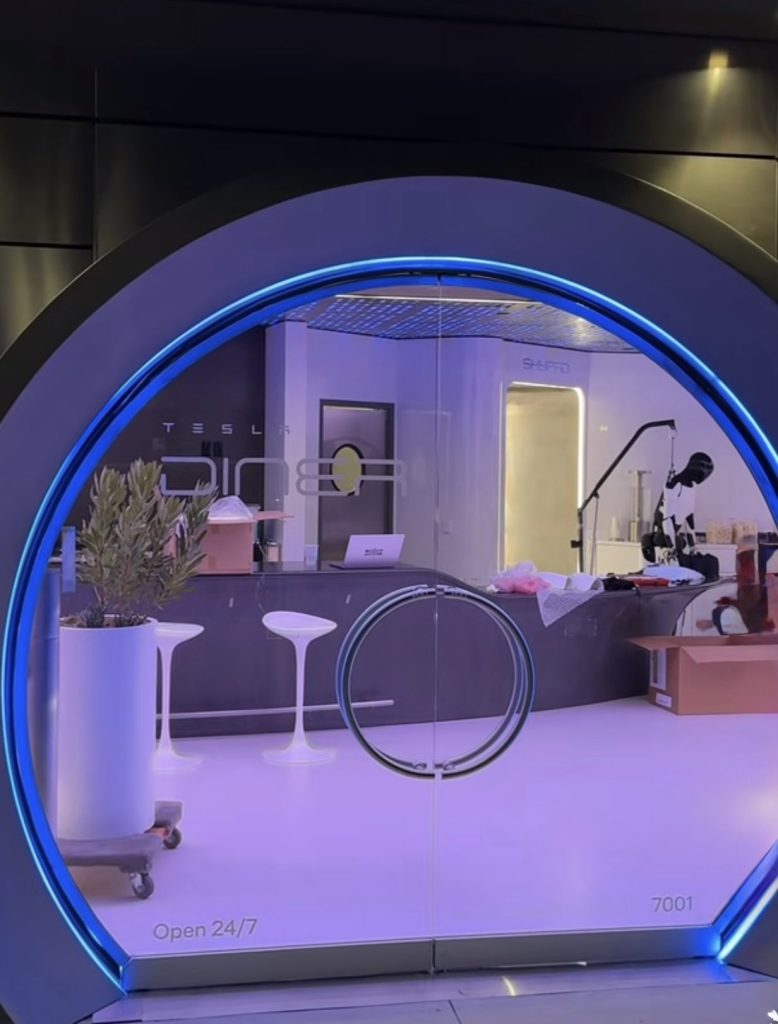
Credit: TeslaKing420 | X
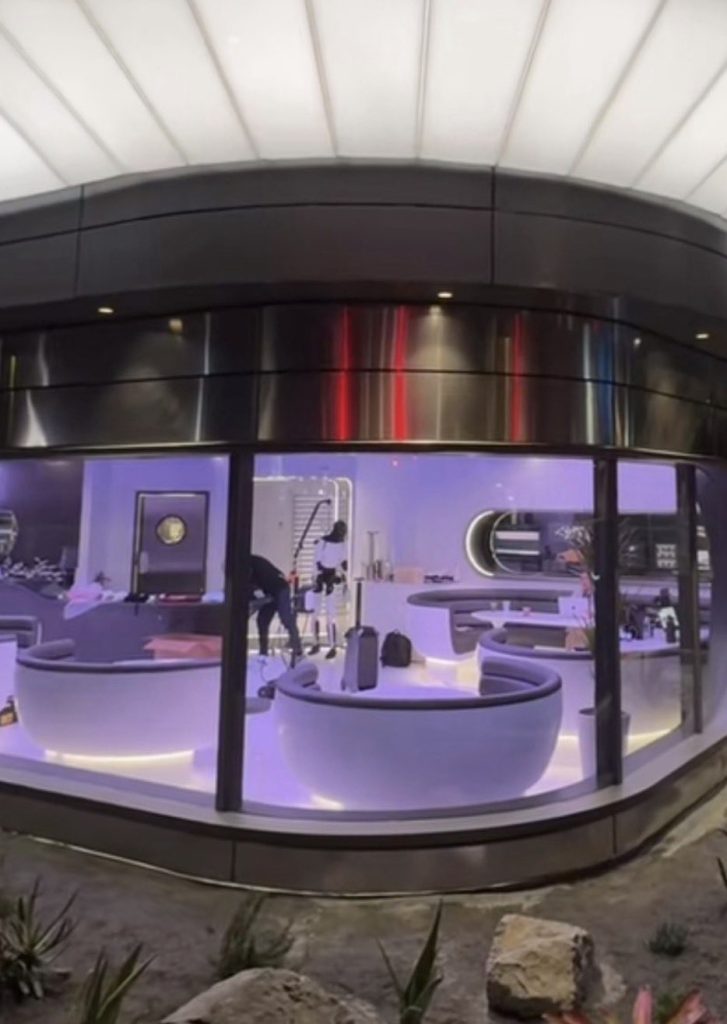
Credit: TeslaKing420 | X
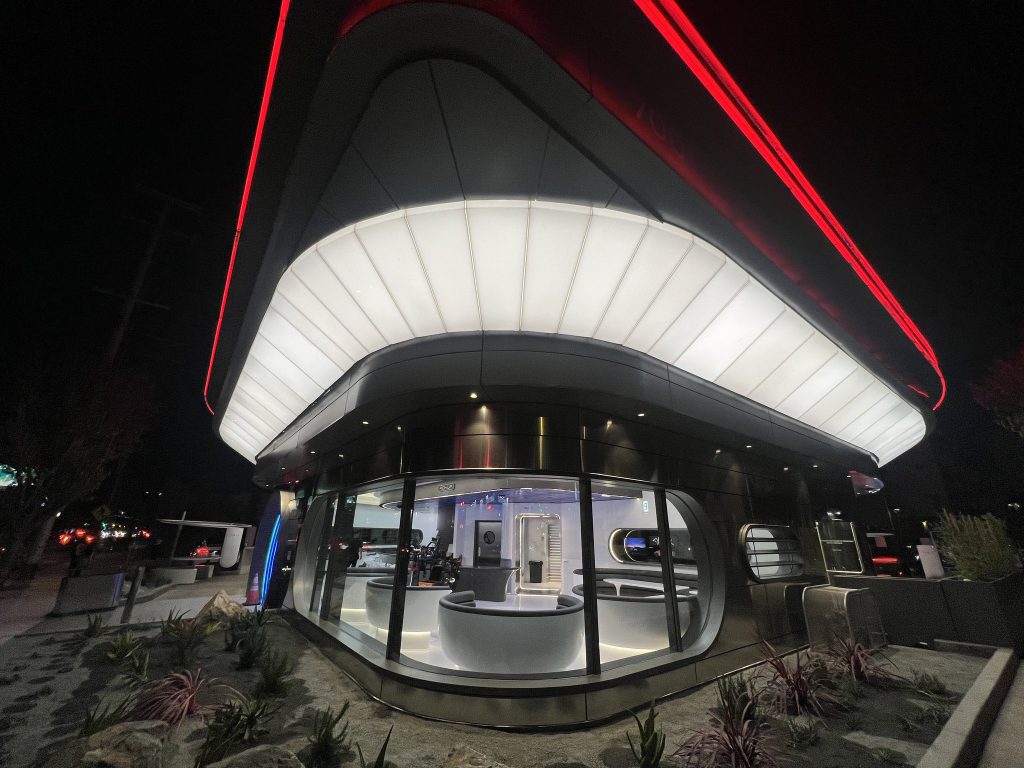
Credit: Brad Goldberg (via Sawyer Merritt on X)
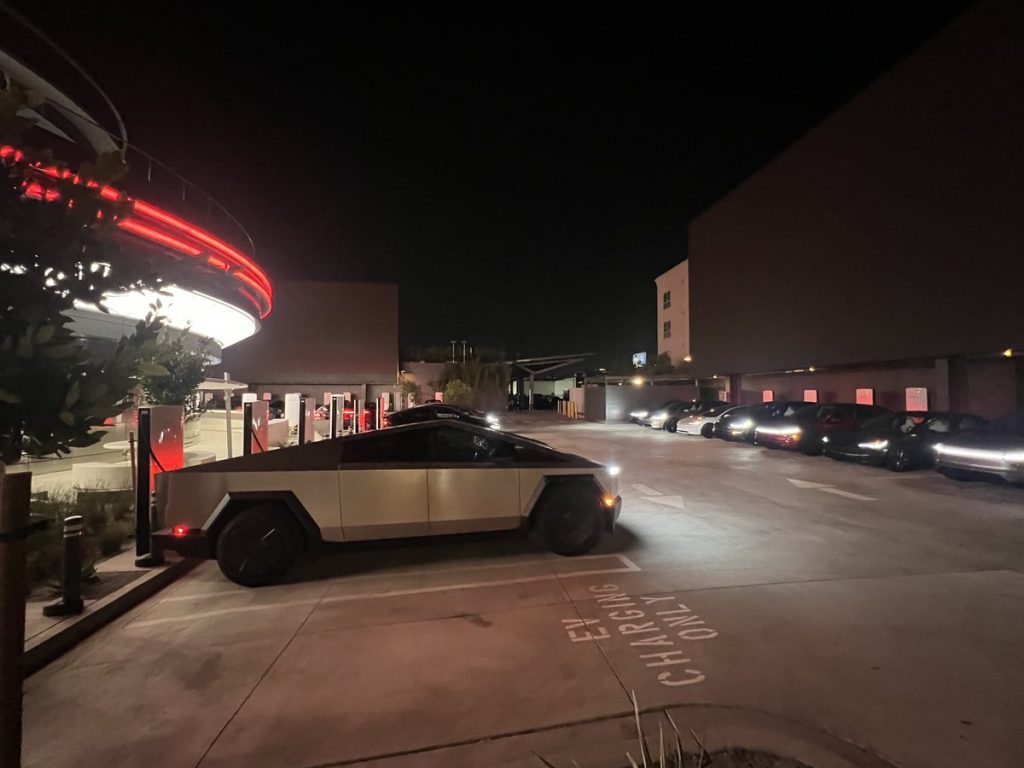
Credit: Brad Goldberg (via Sawyer Merritt on X)
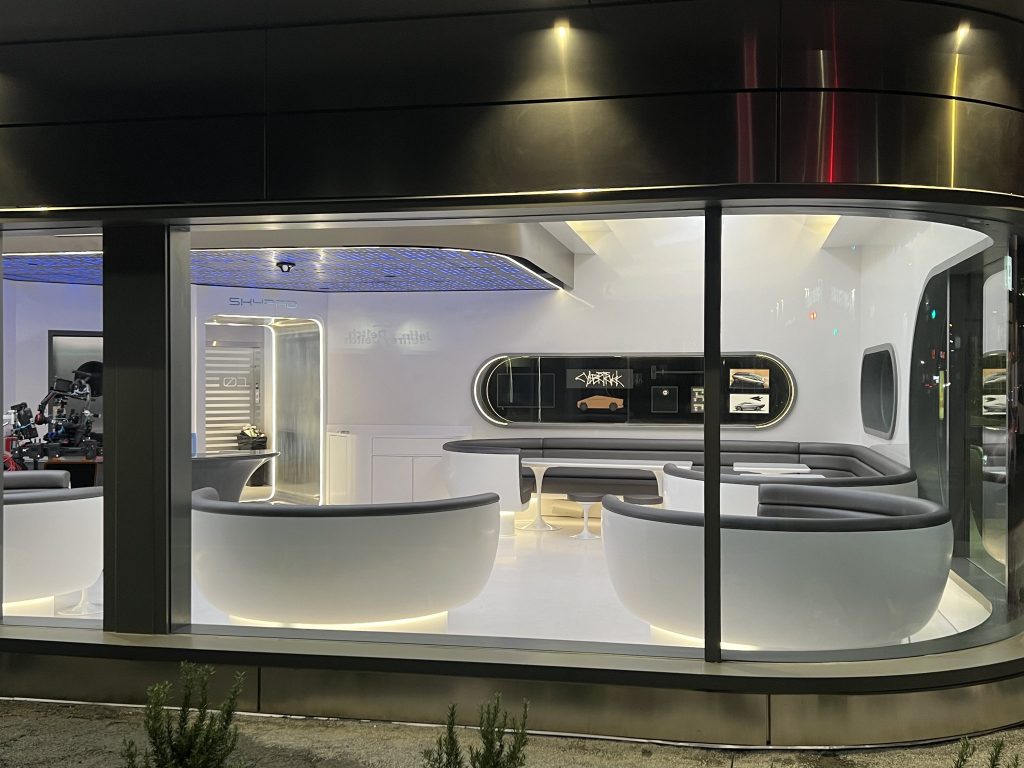
Credit: Brad Goldberg (via Sawyer Merritt on X)
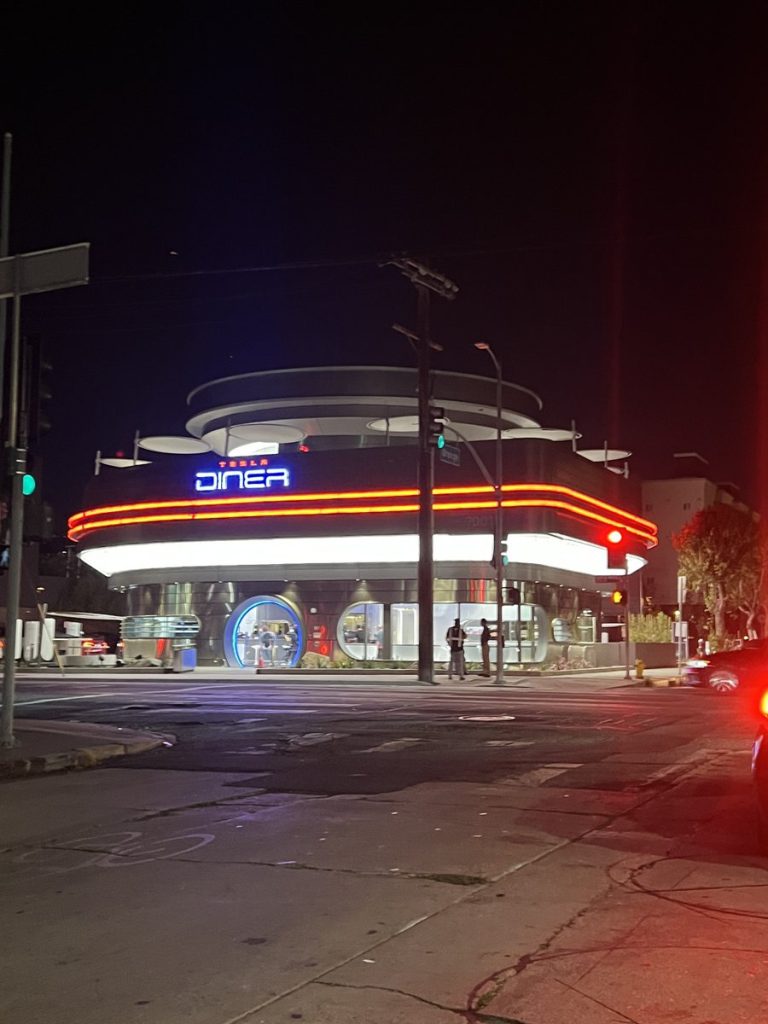
Credit: Brad Goldberg (via Sawyer Merritt on X)
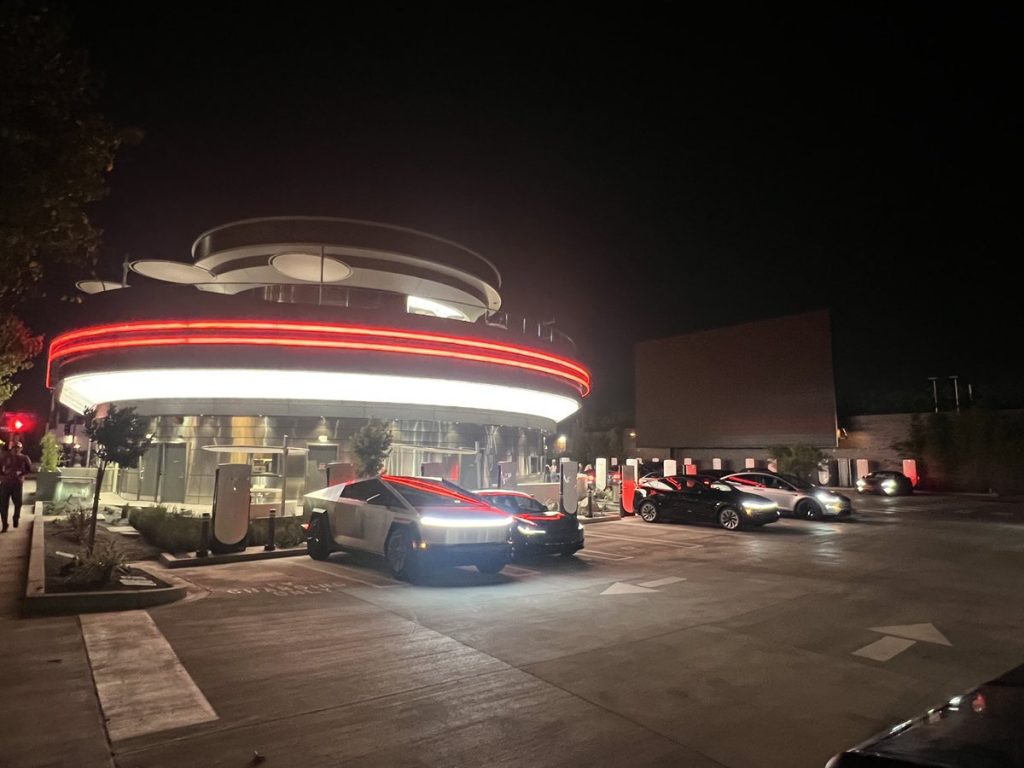
Credit: Brad Goldberg (via Sawyer Merritt on X)
READ MORE ON TESLA’S LA DINER: Tesla readies Drive-In Diner Supercharger for launch with app inclusion
When will the Tesla Diner open to external customers?
While it’s still not open to external customers yet, the news again suggests that the company could be close to an official opening date. Tesla first broke ground on the Diner in September 2023, after receiving a wave of building permit approvals throughout that year. Teslarati also covered much of the construction progress throughout last year, including when crews installed the first and second drive-in screens.
Located at 7001 West Santa Monica Boulevard, the idea was first discussed in 2018 by Musk and a few others on Twitter, featuring 1950s rock and roll, waiters on roller skates, and drive-in movie theater screens playing clips from some of history’s best movies. Notably, the photos of the front doors also show that the site will be open 24 hours a day, 7 days a week, whenever it does end up opening.
Tesla’s progress on Supercharger with diner, drive-in seen in aerial footage
-

 Elon Musk2 weeks ago
Elon Musk2 weeks agoTesla investors will be shocked by Jim Cramer’s latest assessment
-

 News2 days ago
News2 days agoTesla debuts hands-free Grok AI with update 2025.26: What you need to know
-

 Elon Musk4 days ago
Elon Musk4 days agoxAI launches Grok 4 with new $300/month SuperGrok Heavy subscription
-

 Elon Musk7 days ago
Elon Musk7 days agoElon Musk confirms Grok 4 launch on July 9 with livestream event
-

 News1 week ago
News1 week agoTesla Model 3 ranks as the safest new car in Europe for 2025, per Euro NCAP tests
-

 Elon Musk2 weeks ago
Elon Musk2 weeks agoxAI’s Memphis data center receives air permit despite community criticism
-

 News4 days ago
News4 days agoTesla begins Robotaxi certification push in Arizona: report
-

 News2 weeks ago
News2 weeks agoTesla sees explosive sales growth in UK, Spain, and Netherlands in June





